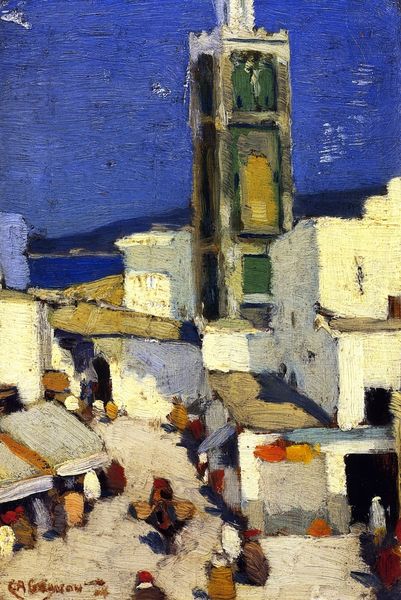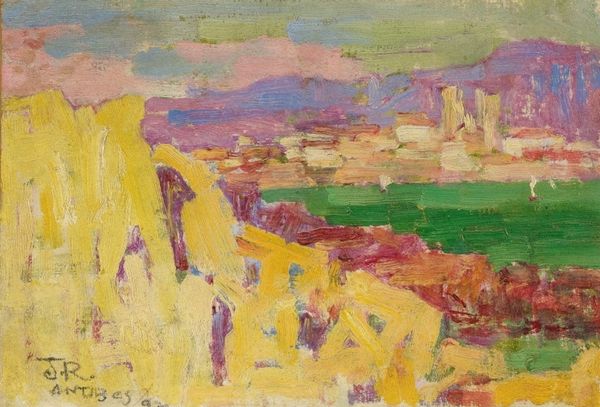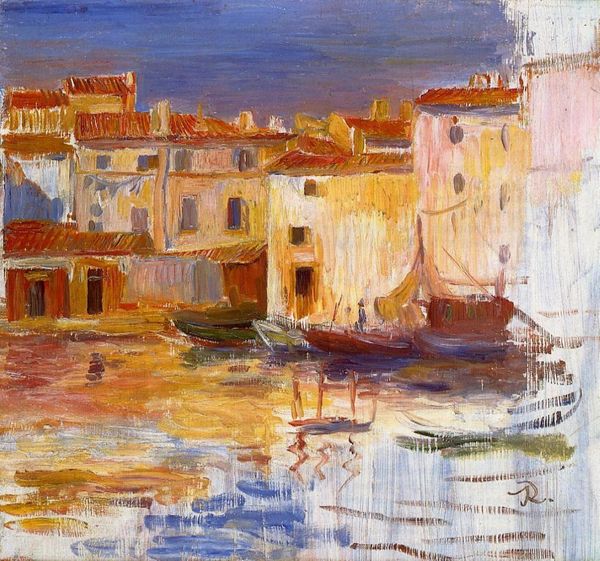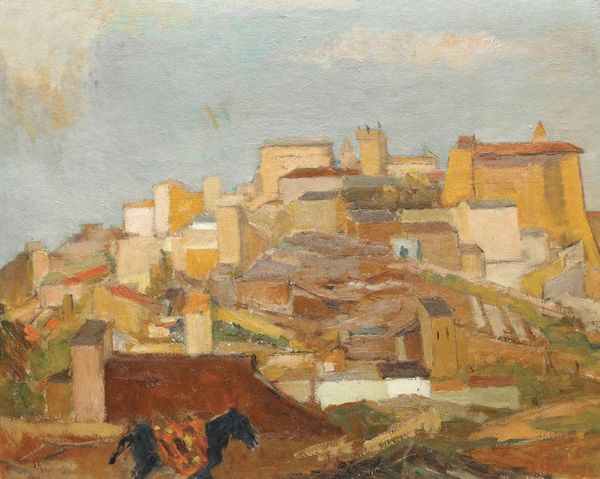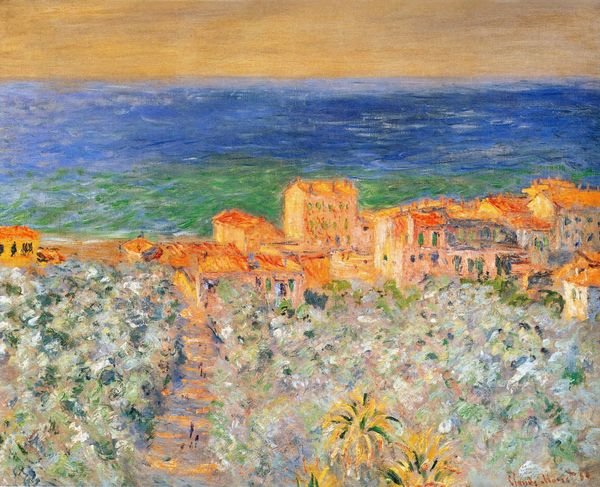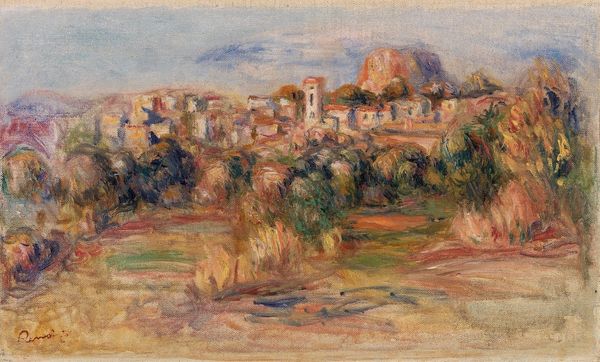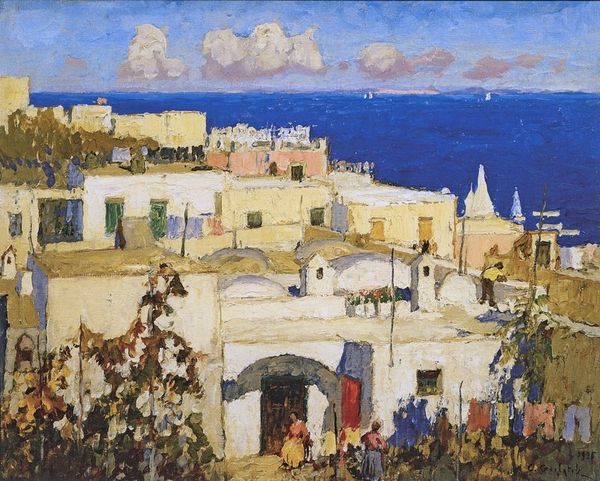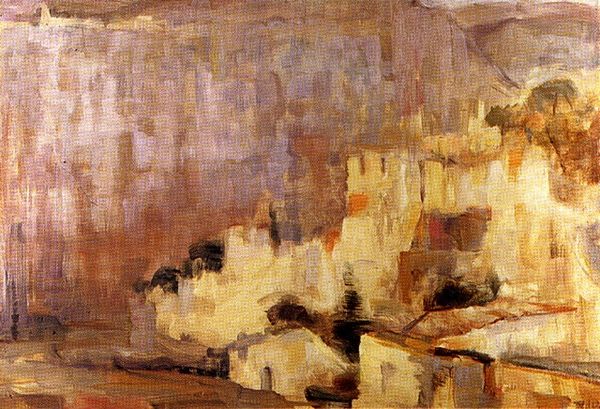
painting, oil-paint
#
painting
#
impressionism
#
oil-paint
#
landscape
#
impressionist landscape
#
oil painting
#
cityscape
#
post-impressionism
#
building
Dimensions: 41 x 31.5 cm
Copyright: Public domain
Curator: We are looking at Theo van Rysselberghe’s “View of Meknes, Morocco,” completed in 1888. It’s an oil painting, exhibiting a post-impressionist style. Editor: My first impression is that this work is bathed in a soft, almost dreamlike light. The color palette creates a sense of serenity and timelessness. Curator: The brushstrokes certainly contribute to that atmospheric quality. Van Rysselberghe was deeply engaged with the play of light and color, taking inspiration from pointillism. You see this manifested through juxtaposed dabs of paint, creating luminous optical mixtures. Editor: Interesting. To me, the almost hazy depiction serves to soften what would be, in reality, a rather stark and potentially imposing urban environment. It raises questions about colonial representation. How might Rysselberghe's Western perspective shape the way Meknes is portrayed? Curator: Indeed, the simplification of architectural forms—reduction to near-abstract shapes and blocks of color—certainly emphasizes surface qualities and pictorial unity over precise documentation of the city. The interplay of those ochre, lavender, and azure hues, modulated by light, create a tapestry effect across the canvas. Editor: Perhaps the romantic lens through which the scene is filtered inadvertently obscures some realities of life in Meknes at that time? By focusing almost exclusively on aesthetic considerations – the "how" of painting rather than the "what" – does the painting elide its historical context? Curator: Precisely. Yet, the very facture of the painting—its tactile materiality and chromatic intensity—reveals the artist’s commitment to exploring the intrinsic possibilities of the medium, independent of mimetic obligation. That intense yellow sky almost overshadows the cityscape; look how he builds tone through distinct touches. Editor: And the placement of those small figures atop the building? Their inclusion certainly humanizes the composition, adding a layer of relatable scale, despite the broad application of pigment overall. Curator: I think engaging with the politics and aesthetic qualities hand in hand can enhance and expand our understanding of these artworks. Editor: I agree, it offers new insights into how art can communicate on so many levels.
Comments
No comments
Be the first to comment and join the conversation on the ultimate creative platform.
